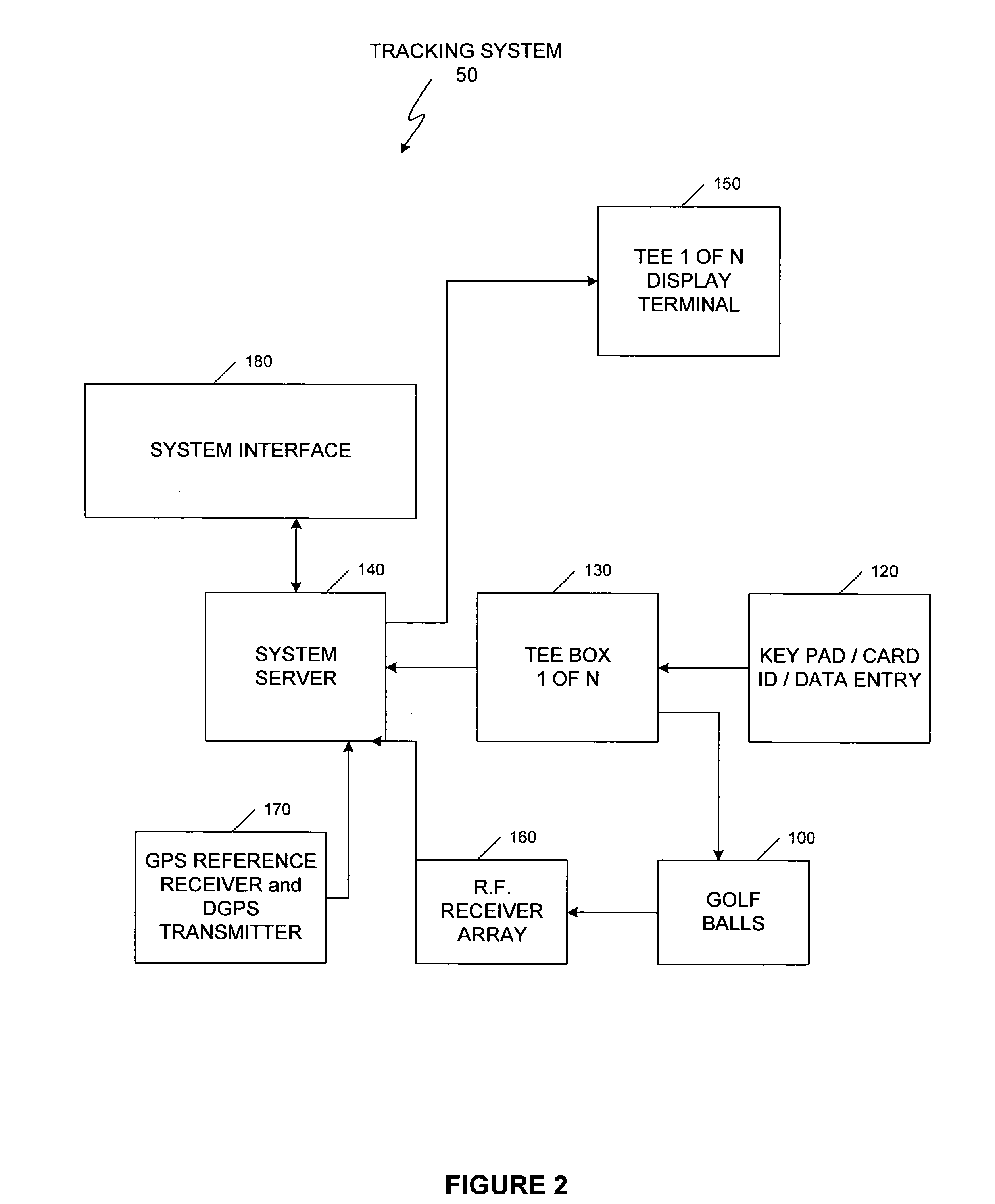System and method for tracking identity movement and location of sports objects
a technology for identity movement and location, applied in the field of tracking moving objects, can solve the problems of not being able to visually follow the ball or accurately estimate the traveled distance, and not being able to accurately estimate the distance, and unable to ascertain the actual distance measurement of the hit ball
- Summary
- Abstract
- Description
- Claims
- Application Information
AI Technical Summary
Benefits of technology
Problems solved by technology
Method used
Image
Examples
Embodiment Construction
[0027] The invention will now be described in detail with reference to the accompanying drawings. Although the present invention can be used to simultaneously track a plurality of sports objects in almost any sport, it will be described in this section with regard to one possible embodiment in the sport of golf. Generally, this embodiment relates to a system and method of tracking the distance, location and flight path attributes of a golf ball that has been struck or played during its normal course of being used. Specifically, this embodiment relates to an electronically outfitted golf ball that is capable of being tracked by a tracking system that can be installed on a golf practice range, driving range, golf course, or indoor environment.
[0028]FIG. 1 illustrates one embodiment of the novel golf ball. In addition to functioning as a typical golf ball, the golf ball 100 of the present invention is capable of having its location and flight path attributes tracked. Golf ball 100 is ...
PUM
 Login to View More
Login to View More Abstract
Description
Claims
Application Information
 Login to View More
Login to View More - R&D
- Intellectual Property
- Life Sciences
- Materials
- Tech Scout
- Unparalleled Data Quality
- Higher Quality Content
- 60% Fewer Hallucinations
Browse by: Latest US Patents, China's latest patents, Technical Efficacy Thesaurus, Application Domain, Technology Topic, Popular Technical Reports.
© 2025 PatSnap. All rights reserved.Legal|Privacy policy|Modern Slavery Act Transparency Statement|Sitemap|About US| Contact US: help@patsnap.com



